 |
 |
 |
Volume
6 - Issue 05
MAY - 2008 |
Heavenly Ganga, The Farakka Barrage and its Atrocious Aftermath... Reflections, Lessons, and Questions Mr. Jatin H. Desai
The Ganges Valley, or basin, is 322 to 644 km wide (200 to 400 miles). The river starts in an ice cave on the southern slopes of the Himalayas, about 3,140 meters (10,300 feet) above sea level. It flows eastward and empties into the Bay of Bengal. Its mouth forms a vast delta. At the delta, it is joined by the southward-flowing Brahmaputra River. Their combined delta is the largest in the world. The delta begins more than 322 km (200 miles) from the Bay of Bengal and lies mostly in Bangladesh. It is largely a tangled swampland. Policy makers and engineers have built two major dams on the Ganga. One at Haridwar diverts much of the Himalayan snowmelt into the Upper Ganges Canal, built by the British in 1854 to irrigate the surrounding land. This caused severe deterioration to the water-flow in the Ganga, and is a major cause for the decay of Ganga as an inland waterway. The other dam, and the more recent one is a hydroelectric installation at Farakka, close to the point where the main flow of the river enters Bangladesh, and the tributary Hooghly (also known as Bhagirathi) continues in West Bengal past Calcutta. This barrage, which feeds the Hooghly branch of the river by a 26 mile long feeder canal and its water flow management, has been a long-lingering source of dispute with neighboring countries. Bhagavan Baba has said many times that everything is perfect in our physical world. He has also assured us that not even a blade of grass can move without His Divine Will. Let's try to find the deep 'perfections' from this complex story. The River from Heaven
According to the Indian mythology, King Sagar had 60,000 sons. He defeated all the Asuras (demons) in the earth and wanted to stage an Ashwamedha Yagya to declare his supremacy. For this, as was the practice prevalent in ancient times, he sent his horse across the Earth accompanied by his sons. The King of Heaven, Lord Indra feared the power of King Sagar and to stop him, he stole the horse and tied it to the ashram of Sage Kapil. When the 60,000 sons saw the horse in Kapil's ashram, they got furious and started to attack the hermitage. Sage Kapil was in deep meditation, and on hearing the disturbance, he opened his eyes in anger. As a result, all the 60,000 sons of King Sagar were reduced to ashes, except for prince Asamanjas. Anshuman, the grandson of King Sagar, brought the horse back from the Sage and asked for his forgiveness. Sage Kapil told him that the sons can be brought to life only if Ganga is brought from heaven to earth. Neither Anshuman nor his son Dilip, were successful in this task. But Dilip's son, Bhagirath, was determined to get this task done by praying to Lord Shiva. He started meditating intensely for several years, and finally Ganga was very pleased and descended to the Earth. To prevent the earth from flooding, Lord Shiva received Ganga on His matted locks. King Bhagirath then worshipped Lord Shiva, and Shiva blessed him and released Ganga from His locks in seven streams. The water of Ganga touched the ashes of King Sagar’s sons, who then rose to their eternal rest in heaven.
The seven streams of Ganga are Bhagirathi, Janhvi, Bhilangana, Mandakini, Rishiganga, Saraswati and Alaknanda which merge into Ganga at Devprayag. The rock on which King Bhagirath is believed to have meditated, is called ‘Bhagirath Shila’ and is located near the temple of Ganga. The Sacred Significance of Ganga
For Hindus, the river Ganga is very sacred. They believe that bathing in the river (especially on certain occasions) redeems them from their sins and helps attain salvation. People travel from long distances to immerse the ashes of their kin in the waters of the Ganga; this immersion also is believed to send the departed soul to heaven. Several places, sacred to Hindus, lie along the banks of the river Ganga, including Haridwar and Varanasi. People carry sacred water from the Ganges that is sealed in copper pots after making the pilgrimage to Varanasi. It is believed that drinking water from the Ganga with one's last breath will grant the soul the supreme seat in heaven. This is one of the principal reasons why most Hindu families keep a vial of water from the Ganga in their house, apart from it being a sign of auspiciousness, and also prestige. Hindus also believe life is incomplete without bathing in the Ganga at least once in one's lifetime; it not only cleanses the soul, but also cures many physical ailments. The ancient scriptures mention that the water of the Ganga carries the blessings of Lord Vishnu's feet; hence Mother Ganges is also known as Vishnupadi, which means, "Emanating from the Lotus Feet of Supreme Lord Sri Vishnu – the Eternal Preserver of the Universe." Ganga – Her Glorious Spiritual HeritageSome of the most important Hindu festivals and religious congregations such as the Kumbh Mela and the Chhat Puja are celebrated on the banks of the River Ganga. For millions of Hindus, the 350 km (200 miles) stretch between the cities of Varanasi and Kanpur is one of the most sacred sections of the river; it serves as the setting for the great epic, Ramayana. A small coastal town of Singhberpur is featured as the place where Lord Rama, Sita and Laxman cross the Ganges on their way into their fourteen year exile. Despite the river's massive pollution, Hindus come from all over the country to bathe, worship and honor dead relatives in the holy waters. At the city of Allahabad, midway between Kanpur and Varanasi, the Ganges merges with River Yamuna and the mythical River Saraswati. Together, they form the ‘Sangam’ or sacred confluence. According to the Hindu tradition, it is believed that if one takes a dip or casts the ashes of dead relatives into the water at this spot, their next life will be better.
Varanasi is an important spiritual center for the Hindus. Much of daily life in this holy city takes place on its 84 ghats — stone steps that descend steeply down to the river and stretch two miles northward in a gentle crescent. It would not be unusual to find people from all walks of life and from all corners of the world as pilgrims, to wash away their sins and seek salvation. One can also find many local villagers who seek more immediate blessings — success in exams, better health, birth of a child, hand in marriage, resolution of family conflicts, or help kicking an addiction. Unique Ecology of Ganga
To this date, the water of holy Ganga is believed to have Amrit (nectar) in it. Recently, when studied by scientists, they have uncovered something remarkable. The Ganga water, collected at its origin, is in a pure state, and even after being kept for several years, somehow it does not get easily contaminated. These medicinal properties of Ganga waters are attributed to the inherit secretions of herbs and mineral content which get mixed with the water. As it flows through highly populous areas, the Ganges collects large amounts of human pollutants, e.g., Schistosoma mansoni and faecal coliforms, and drinking and bathing in its waters therefore carries a high risk of infection. The combination of bacteria and some x-factor, even though while large populations of people bath in the river everyday, have apparently produced a self-purification effect, in which water-born bacteria such as dysentery and cholera are killed off, preventing large-scale epidemics. The river also has an unusual ability to retain dissolved oxygen, but the reason for this ability is not known – it’s a complete mystery. In recent past, researchers decided to find these special properties by traveling to the river's source in the Himalayas. They found wild plants, radioactive rocks, and unusually cold, fast-running water combine to form the river. But since 1854, almost all of the Ganges' water has been siphoned off for irrigation as it leaves the Himalayas. Dr. Bhargava, who has spent a lifetime performing experiments up and down Ganges, was asked about this special ‘healing’ effect. In most rivers, Bhargava says, organic material usually exhausts a river's available oxygen and starts putrefying. But in the Ganges, an unknown substance, or "X-factor" as a "disinfectant," acts on the organic materials and bacteria, and kills them. Bhargava says that the Ganges' self-purifying quality leads to oxygen levels 25 times higher than any other river in the world. This, of course, can be explained easily by a molecular biologist. What cannot be explained and is most mysterious about the Ganga ’s ecology and this X-Factor, is why it only exists in Ganga and no other river on Earth. Ganga – The Sustainer of Millions“The Ganges provides sustenance to more people than the population of the United States. She passes through India's most populous state, its most lawless state, its holiest city and Calcutta, the country's cultural capital and latest aspiring technology hub,” writes Mr. Philip Reeves, NPR’s foreign correspondent based in New Delhi, in an article on this ancient river.
Today, there are hundreds of towns and extensive civilization at the banks of this mighty river. Over 400 million people live near the banks of Ganga. The Ganges Basin, with its fertile soil, is instrumental to the agricultural economies of India and Bangladesh. The Ganges and its tributaries provide a perennial source of irrigation to a large area.
Chief crops cultivated in the area include rice, sugarcane, lentils, oil seeds, potatoes, and wheat. Along the banks of the river, the presence of swamps and lakes provide a rich growing area for crops such as legumes, chillies, mustard, sesame, sugarcane, and jute. There are also many fishing opportunities along the river, though it remains highly polluted. Tourism is another related activity. Three towns holy to Hinduism – Haridwar, Allahabad, and Varanasi – attract thousands of pilgrims to its waters. The rapids of the Ganges also are popular for river rafting, attracting hundreds of adventure seekers in the summer months.
The river also serves as a drinking source, a bathing hole and a baptism sight. The river is one of the only sources of water for the people of India who cannot afford clean running water. On the same note, it is used as a mass-bathing hole; over 10 million people bathe in the river daily. People with diseases and very poor hygiene, cause for the pollution of this river.
Mankind and the River GangaAs glorious as Ganga is to the Hindus, there is also a different type of Ganga being experienced by many today. Here, the Mother Ganga is not exactly being revered as most might expect. To fully understand the magnitude of the story, allow me to take you back a bit to create a ‘context’ first. Relations between Bangladesh and India have often been difficult. There was considerable hostility on both sides of the border when East Pakistan was established in 1947 in the midst of intense communal struggles among various ethnic groups. As part of Pakistan, East Pakistan was at war with India in 1947 and 1948, and again in 1965. If we look very closely at the history of why Man asserts himself into a national conflict, it is easy to pinpoint the character of leaders involved. It is always the individual leaders rather than impersonal objective factors that determine whether nations will go to war and whether they will continue to fight it to an irrationally prolonged and destructive extent. History also shows that the egos and lack of integrity in the leaders leads to manipulation across the borders, and goes far as creating misconceptions about entire nations and their citizens. This massive shift towards negative consciousness leads to larger conflicts and irrational political decisions. It is preposterous that everything in the universe should obey physical laws, while a five-foot-tall creature living on the surface of one tiny planet manipulates history through his perceptions and misperceptions. But it happened amongst this regional conflict, as it continues to happen today in many parts of our planet. In this case, Bangladesh and India who are so closely intertwined - with 2,400 kilometers of border, common river systems, and numerous trans-border cultural or economic contacts--has provided numerous opportunities for bilateral disputes.
Despite considerable progress in expanding contacts between the two countries, a number of serious issues concerning river waters and borders continued to stir up anti-Indian emotions in Bangladesh. The most difficult long-term bilateral problems, between the two countries, revolved around water disputes. These problems surfaced during the 1950s and 1960s, when the port of Calcutta on the Hooghli River experienced siltation problems. The Indian government decided that the solution was to divert the Ganges River water into the Hooghli River during the dry season, from January to June, in order to flush out the accumulating silt. In 1974, the Indian government built a major barrage, or dam, across the Ganges at a small town of Farakka, near the Bangladeshi border, about 10 km from the Indian side of the border. Generally, a barrage is built on flat land for the purpose of diverting water; this is achieved by raising the level of the river so that part of the flow can be diverted into a feeder canal which leads to wherever the water is required. The Farakka Barrage was constructed with the aim of reviving the Port of Calcutta. The diverted water was designed to produce an extra flow that would flush the siltation from the lower reaches of the river. When the Farakka Barrage Plan was announced in 1961, the government of Pakistan responded with concern about the possible effects on East Bengal. They predicted that the reduced quantity of water flowing into East Bengal would be insufficient not only for people who live on the banks, but also for agriculture and ecology that were dependent on the flow of water from the Ganges.
What have been the effects of Farakka Barrage on Bangladesh? Between 1975 and 1976, India withdrew the maximum amount of water from the Ganges. Several studies have been carried out, attempting to determine the agricultural, economical and ecological effect on Bangladesh at that time and the repercussions since. The water levels were at the lowest they had ever been during the dry season of 1976, causing the suction pumps, hand pumps and hand operated tube wells to be incapable of operating in such shallow water. Also, an increase in salinity was discovered, most likely the result of sea water traveling upland because the fresh water downward flow had decreased. For instance, in the town of Khulna, which is situated on the Rhupsa-Pussur and is particularly sensitive to changes in the Ganges flow, the saline intrusion was considered to be the most dramatic. Khulna is a major area of industry in Bangladesh and it appears that the salinity changes have caused industrial losses of millions of U.S. dollars. This is only an estimate but, if we consider the possible occurrences when industries are faced with unexpected levels of salt in their water, such as production delays, mechanical failure, increased corrosion, then such losses are indeed plausible. The effect on agriculture in Bangladesh is a source of dispute - Bangladeshis believe the Farakka Barrage is responsible for reduced rice and other crop yields but India rejects this claim. The Sundarbans (world’s largest estuarine forest) have also shown signs of deterioration through increased salinity, chlorine levels, and insufficient nutrients in the water. There are mixed conclusions as to the ecological effects of the Farakka Barrage, but there is a strong presumption that the barrage has caused declining fishing.
People living in the area, claim that the increased salinity is threatening their crops, industry and animal drinking water. It is unlikely that Bangladesh will receive compensation for the losses they claim, since in so many areas, it has been impossible to prove that Farakka is solely responsible. Nevertheless, it is beyond doubt that the people of South Bengal have suffered greatly as a consequence of the Farakka Barrage. The damage caused to the local agriculture industry due to the lack of availability of water is irreparable, to say the least. It has been calculated that if Bangladesh had access to the same quantity of water as before, the country could have produced 36 lakh tons more crops valued at 2300 crores of Taka ($335 Million USD). Agriculture being the mainstay of the economy of this tiny south Asian nation, there is no way to recoup this devastating loss. Increase in salinity in the vast south-western region of Bangladesh is having ruinous effect in various ways, from diminished crop-production, fish-catch and power generation to reduced industrial output. Some species of valuable trees in the Sundarbans are also known to be disappearing consequent upon salinity increase. The damage due to withdrawal of waters at Farakka has been so wide and multidimensional that it is difficult to estimate. However, careful estimates put it to the tune of 11 thousand crores of Taka (almost $2 Billion USD). This does not include damage to the environment which defies any precise calculation. What is more, if the rate at which the flow in the Ganges is dwindling continues, the river which has been flowing since thousands of years will be reduced only to a gigantic trough without any water therein. The Implausible Devastation
As inhumane and intolerable as it sounds, this is not the worst. To experience today, how the dam has affected life and livelihoods on the Ganges in this part of the world, one needs to travel to Panchanandapur, a small town in West Bengal. On a map, it appears to lie well inland from the Ganges. But today, something unbelievable has happened to Panchanandapur and the village's approximately 5,000 residents.
In the middle of 2007, it was precariously on the banks of the Ganga instead of its original origin – approximately six miles westward. Mr. Kalyan Rudra, a geography professor in Calcutta, explains that the dam forced the Ganges to shift almost six miles eastward over the last 30 years, eroding most of this village. By last year, an indigo factory, sugar mill, hospital, police station and a two-story government building were all swallowed by the river among other settlements, while Ganges was moving towards the small village. Today, less then ten months later, the Ganges has completely swallowed Panchanandapur. In fact it has been moving so fast, that now, the original western part of the town which was once underwater has reappeared on the other side of the river bank in Bangladesh. Can you imagine? The local West Bengalese farmers have actually been able to identify their land property on the other side of the river after the river swallowed it few years back. As envisioned, the Farakka barrage was built at the narrowest point on the Ganges to divert water to Calcutta to the south and flush out the silt that was clogging up its port. But scientists now say the project was ill-conceived from the start: Water upstream from the dam carried massive amounts of silt, dropping it directly behind the dam. The buildup — almost 700 million tons annually — has clogged the dam's gates and raised the river bed more than 20 feet. The silt buildup has also forced the river to change its course, swallowing villages and buildings. So here you are. Imagine you are a West Bengalese who lived all your life in this small village and was the owner of the generational business and the property. Due to the Farakka barrage, your entire life’s belongings are gone – literally overnight. Your family is homeless and without shelter. Your children have no future ahead any longer. You cannot just get up and go, because all you know is to either fish, or run a small business for the locals. Your most prized possession is the land property that you can pass down to your children and the future generations. You have nothing left to run with – no single belonging. You are not the only one. Everyone you know is also going through the same tragedy, trying to support each other. You are asking the deep questions - why did the government do this, and why to me and my family? And why did God do this? And what is there to live for any longer? and so on. Somehow you survive through the wild destruction caused by heavy rains and the trajectory of Ganga - but not everyone you know was lucky enough to save their families. One day, after months of survival instincts and support of the villagers, you discover that pieces of Panchanandapur village are reappearing on the other side of Ganga. With brevity, you take a small boat and cross the river to find your own property. Sure enough, you do. You are able to recognize the landmarks to prove your belongings and that of your neighbors. Alas, you can feel some Divine Hand in all this. How could this be? You are shocked. Maybe, you tell your self, this was all due to past Karma, and it’s over. Somehow you will figure out how to get back on track. You and some of the villagers are now starting to ‘settle’ into this newly found land on the other side of Ganga. As interesting as it sounds, it’s not over. These impacted villagers on the ‘new’ side of Ganga, still consider themselves part of West Bengal. The shift in geography has opened a territory question; neither West Bengal nor Bangladesh recognizes these displaced villagers. These villagers are country-less as of today. The Real Insights from Man-made DisastersOriginally, in early 1960s, the Farakka Barrage was envisioned to revive industrial survival of Calcutta by the Indian government. Here, Man (primarily the government officials) decided to change the course of the Goddess Ganga to create materialist benefit for himself. Man put all of his intellect, spent millions of dollars, poured resources, and muscled his political power to fulfill selfish goals – that of industrial success. All of this was done in the name of ‘his country’.
The tide of change that has engulfed humanity in the last two centuries - through the industrial revolution and beyond, has inevitably, and visibly, left its mark on the Ganges. It is true that due to the Farakka Barrage, the city of Calcutta has greatly benefited in numerous categories, including commerce. These same industries as of now, unfortunately, have accelerated discharge into this river as well. Once, Ganga was known for its purity, now it is rendered unsafe for consumption. While it used to be considered meritorious to die and be cremated in Benares, the very belief causes further pollution of the river - given the un-sustainable rate at which partially cremated cadavers are dumped into the river. The dawn of the information revolution and the internet has brought thoughts from around the world in close contact as never before. As a newly generated affluence generated by the boom in the information industry spreads across the world, life styles across the Indian subcontinent are undergoing a sea change. It is only a matter of time, before a semi-urban style of life will establish itself in hitherto remote areas. Man, will continue to exploit the nature to gain materialistic success. He will justify the decisions without deeper, long term effects they might have. Because, he has armed himself with belief that materialists growth is the only way to define success – at individual level, at level of society, and at the grander level of political strength, which is, in fact, the ultimate self-deception. The Self-Deception
In spite of these waves of change, the core of the eastern belief in the interconnectedness of life remains unchanged. The simple act of thanksgiving - through the offering of a clay lamp, on a leaf with a few petals of fresh flowers to the life sustaining waters of the Ganges, at the culmination of the Ganga Aarti - carried out even today - night after night at Haridwar, where the Ganga enters the plains, is a standing testimony to this immutable undercurrent of the religious thought. Here lies the irony. As explicit and visible the traditions are today, one needs to wonder how deeply rooted are the human unconscious behaviors. It is very easy for us to start blaming the short-sightedness of those who were involved with designing, approving, funding, and building the Farakka Barrage in early 70s. It is also very easy, now, for us to see the deeper insights of destruction that was not available before the project was undertaken. I wonder if such insights were available, whether the project would have continued. I question myself, if the engineers who built the barrage, knew about the potential design problems that would force Ganga to divert itself, leading to such massive destruction to human lives and uproot streams of villages near by. I wonder if the business community in Calcutta cared about the possible danger the barrage would have to Bangladesh and West Bengal neighbors before it was built. What is critically important is for all of us to look around at the large scale decisions that we, the human beings, are passively or actively making everyday around us that may be having negative impact on other lives. It is not too hard to find other current examples – the Afghan war, the Iraqi invasion, the unrest in Kashmir, etc. I wonder how many of us are supporting (with voice or without opposing voice) societal projects that may have negative environmental sustainability forecast in the long term. We, as our beloved Bhagawan loving calls us, the monkey minds, spend all of our time living within our small cocoon. We are, generally, too busy to understand or act for anything that does not ‘belong’ to us or our livelihood. We have outsourced our decision making to the ego within – which operates on autopilot. We have convinced ourselves that life needs to be ‘simplified’ by acquiring worldly-pleasures while ignoring the ‘dirty headlines’. That is the job of the government, we say, why else do we pay taxes? The self-deception is so strong that we have fully convinced our self that this is the reality and everything is ‘Karma’. We might even say, “Well… the barrage was supposed to happen. It had to occur, because it was meant to be. It was written in the grand plan that those villagers had to pay their karmic debt.” This is the self-absorbed ego with a veil covering the reality. The Sai Ganga
Our beloved Swami has given us many deeper lessons, insights, and examples to help us fully realize the Truth within this story. I am just a small servant at His Divine Feet. I am sure I do not have the real answers to the role of man-made devastation in the overall goal of spiritual journey and human development towards mergence with the source – the Divine Love, our beloved Bhagawan. I am sure the multi-dimensions and complex issues the Farakka Barrage has caused, can be intellectually discussed from all perspectives without a common end or agreement by all parties involved for as long as we have time. The opportunity I would like to propose to you, dear reader, is to explore the deeper lessons using Swami’s teachings from this story. There is Ganga flowing within all of us. What is it? It is the Divine Sai Love. We have been chosen by Lord Shiva to be on the bank taking a bath in His Physical Presence. How beautiful an opportunity! Only few can live near Mother Ganga – we, the Sai Devotees, are those chosen ones. Most of us are too busy and have taken this Mother Sai Ganga for granted, even though She is always there to purify our sins and bless us everyday. We have become too busy to recognize the true mission of Sai Ganga – to lead us back to our heavenly origins. We have taken Sai Ganga for granted, as did many when building the barrage. Even though we live on the banks of Sai Ganga, we have lost the vision of the inner beauty and sublime power it has – to cleanse and heal all who come. Instead, we have chosen to dump our worldly desires and attachments, in the form of pollution, at the feet of Sai Ganga. We continue to hurt Her, without much regard to what it might be doing to Her ‘health’– physically. Regardless of how much we make Her suffer and make Her unhappy, she continues to sing the glorious sound of heavenly Love to all those who take daily dip in Her thoughts. The Sai Ganga absorbs all of our pollution, bad thoughts words and deeds, everyday. Just as the Ganga River, Sai Ganga does not waiver her healing power to anybody who comes to Her. How beautiful is Ganga and Sai Ganga? It never stops its flow to think about Herself, and it only wants to take all who swim in Her glory to help them reach their original source – the ocean of Love. We, as Sai Devotees, are the few chosen who have been blessed to reside at the ‘Sai Shore’ – where we can bath in the glory of Mother Sai. The Mother has been taking care of our livelihood everyday as Ganga does for the local villagers on shore. Ganga ’s pollution is a result of Man’s complete recklessness to fulfill unending depth of desires without a limit – as our beloved Bhagawan has said – lack of Ceiling on Desires.
In the same way, do we really appreciate the grandeur and the beauty of Sai Ganga in our life? Do we truly appreciate the invisible flow of the Sai Ganga being poured upon us? Do we truly welcome the opportunity we have been given, on the shores of Sai Ganga, to finally get out of the life-and-birth cycle which our Atma has been longing for? We continue to exploit our relationship with Sai Ganga by allowing the deep self-deception within us to exist - for the unreal. We might have convinced ourselves that we are Sai Devotees, so we don’t have to be perfect, because Swami is in our lives; He will take care of things. If we have problems, we will just ‘surrender’ them to Swami. We even go far as, singing the glory of Sai Ganga’s name, without the beauty and the heritage of each word. Does such self-deception please our beloved Sai Ganga? Just as the Hindu tradition honors the healing powers of Mother Ganga, for us, we have an opportunity to take a dip in the Love of Mother Sai Ganga. What a blessing! The Farakka Barrage Within All of UsThe Farakka Barrage’s original intent was to divert some of the Ganga’s flow from its original direction instead towards Calcutta. Mother Ganga did not decide that; Man decided that. All those who were involved, somehow, were able to ‘see’ what was at that time. The experience and expertise available was utilized to build the barrage. Decades of intellectual assessment, between governing bodies that lead to the final decision to construct the barrage, was strictly designed through the ‘physical eye’ – the mind, the intellect, and the knowledge of humans involved. As human beings, we build bridges and barrages within us all the time – using the ‘physical eye’. We have been trained to ‘see’ the world at physical and emotional levels, then evaluate what we ‘see’ against the experiences and lessons from our past, then, using our intellect to rationalize and synthesize, we finally make decisions – generally to serve our self and our ego (or our collective ego). By the way, we make these decisions quickly – especially in today’s global business and social cultures, without trying to quiet the mind. Why? Because we don’t have time! Again we see the self-deception at its best, running our life, on auto pilot. We have not been trained to lead our life using our ‘spiritual eye’. For many of us, Swami has been guiding us to develop this ‘spiritual eye’ for last eight decades. Even then, we are struggling, suffering, and spinning. Bridge or Barrage, Looking Past the Mirage As was the case with the Farakka Barrage, it can be assumed that, there was lack of authentic decision criteria available at that time. There was lack of ‘spiritual eye’ available by the parties involved. I would like to propose the notion that there is a Farakka Barrage being built, or it is already constructed, within all of us at this time. Remarkably on surface, these ‘inner constructions’ actually look magnificent (our careers, or businesses, or luxurious homes, or beautiful cars, etc.) as bridges and not as barrages. Without deeper inquiry, we have convinced our self that these bridges, to our future happy life, will give us endless peace and joy. In reality, they are all barrages within. They undoubtedly only give temporary joy. They fix a short-term problem, without our inability to recognize the future negative impact it might have upon us in this journey of life – towards the ultimate goal. Most inner barrages were rooted in the worldly attachments and ambitions. They were built using only the mind and the unregulated ego energy.
As Sai devotees, we have known this as well. But, we continue to keep building these inner barrages every day, not realizing the long term impact it might have upon us and our families. Swami has told us that the world and our body is our universal classroom towards enlightenment. If that is true, we need to dive deeper into such stories to find real answers for our Dharmic growth. We must demand answers from our selves, using our spiritual eye, for our inner growth. So, let’s accept the fact that the story of Farakka barrage is not at all an accident. It is here and now. It has been designed to teach us something. This is true of all that happens to us, everyday. There is no point in devoting negative thoughts towards things that have happened already. Our Dharma should be to learn from it – in a deeper way, once we have accepted that all that happens in the world, near and far, is not by accident but a Divine Will for our own good. If nothing is by accident, then there is absolutely no doubt, it has a come to us with a deeper meaning and it is ultimately best for all of us. This is very hard to do for most of us. It is hard, because here lies one of our barrages within. We don’t like to change. We don’t like to get outside of our comfort zone. We don’t like to be One (the reminder of Unity, Purity, and Divinity from our Sai) we prefer to stay in the illusion of body consciousness – that we are an individual and others are not part of us. This is one of the most complex and strongest inner barriers. As Sai devotees and as serious spiritual seekers, we must recognize other such inner barrages, and then we can start asking more pronounced questions such as:
We can accelerate our inner growth by recognizing that there are numerous types of inner barrages we must fight:
On the surface, the story of Farakka barrage may seem only to be of Person vs. Nature conflict. Is it? It can be argued that it is much more. It actually encompasses all of the above types of inner conflicts. The Hidden TruthsQuestions to contemplate upon: Q: If God is everywhere why is it that we cannot see Him everywhere? Or in the story of Panchanandapur village and the devastation, where is God?
R: Reflection to consider: As human beings we pride ourselves in being ‘doers’, and our lives are often wasted everyday in a continuous pyramid of senseless projects. When do we get a chance to control our mind, the source of all the noise that prevents us to see God everywhere? Swami has been telling us to first let go, to free our minds from continuous concentration on things at the outer edge of our life; where there is little hope for true realization and liberation. Q: The Farakka Barrage is not directly impacting us, it is too far away. What can we do from such distance? What is the inner meaning of this man-made disaster? What is our role?
R: Reflection to consider: Ganga is part of our nature, and for many of us, it is Divinity, the Godhead. If we are a ‘limb’ of our society’ and society is the limb of mankind, and mankind, nature, and divinity are One, we may be able to come up with the answers easily to such questions and inquiry. Swami has also said, "All the limbs [of the body]... are carrying out their respective duties without any concern for their reward. Look at the way the heart functions; the impure blood comes through one channel, it is purified and pumped to all parts of the body through another channel. This is the process by which the body is kept hale and healthy. This is how the Divine works." (p. 69, Sathya Sai Speaks Vol. 27). Armed with this teaching from our beloved Bhagawan, along with the recognition that we have constructed internal barrages/conflicts, we can conclude that, we must vigilantly take care of our character. When we do, we are directly strengthening our spiritual muscle. No wonder, Swami spends so much time with the young students, and our individual spiritual growth. Only when we have developed this muscle, can we take care of our family and society. This will help us serve mankind selflessly, which ultimately is advancing the human consciousness and the harmony between Man, Nature, and God. Q: Why is it that we cannot feel compassion for those impacted by the disaster? Why is it that we cannot feel Love for the homeless in this situation?
R: Reflection to consider: Is it possible that we don’t feel the unity consciousness because we have created these narrow ‘body walls’? It might be easier, first to simply break down these walls in our own home with our own family members first. When we have achieved mastery in home, we might have the courage and confidence to view the world with Love and Compassion outside into society. Q: Why were some towns impacted while others were saved? How did Mother Ganga decide to specifically swallow certain villages and not others? Was it an accident or was it part of a Divine Plan?
R: Reflection to consider: Is it possible that the suffering dawned upon these villagers was actually Grace from Swami? Was it their time to be cradled in the Divine Arms? Was it a favor from the Lord? ConclusionIn conclusion, I offer that there are beautiful wisdom teachings all around us everyday – from every corner of our life – near and far. It is only seen when we have developed (through commitment) a ‘spiritual eye’, that such wisdom is visible. Swami has given us an entire ‘playbook’, on how to live every moment of our life. He has given us all that we need to live our life with perfect joy and happiness. It is strictly up to us to utilize them fully, partially, or simply ignore them. We must shift our thinking and become very aware that we have the choice - the final choice to see the ‘real’ or stay in the ‘unreal’. As Swami beautifully says:
So, that is the key. All the problems in this world are created by the Mind, but the solution lies, not in the mind and its intellectual capabilities and skills, but in the heart. A heart filled with compassion and love alone can bring heaven on Earth, just like Sage Bhagiratha did aeons ago.
Dear Reader, did you find this article informing and inspiring? Would you like us to bring you more such articles concerning man and nature in the near future? Would you like to contribute? Please share your thoughts with us at h2h@radiosai.org mentioning your name and country. Thank you for your time.
|
|||||||||||||||||||||||||||||||||||||||||||||||||||||||||||||||||||||||||||||||||||||||||||||||||||||||||||||||||
Vol 6 Issue 05 - MAY 2008
|
Best viewed in Internet Explorer - 1024 x 768 resolution. |


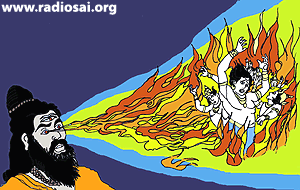

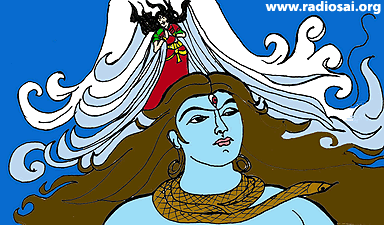



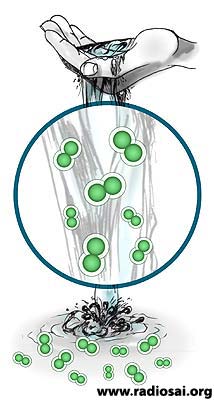

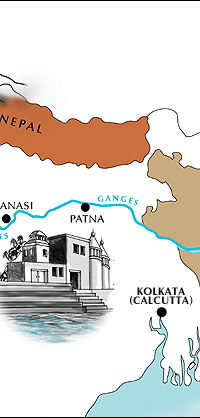


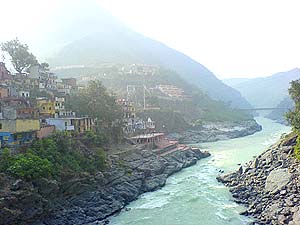

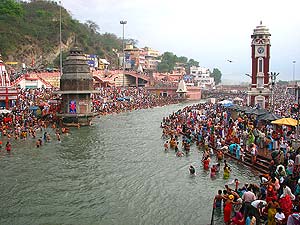
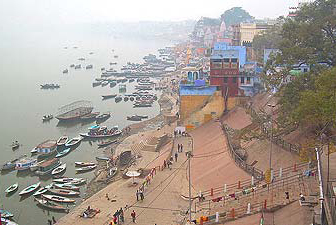
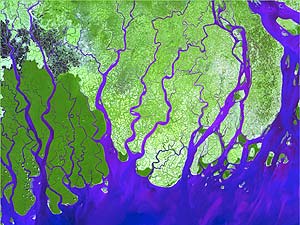



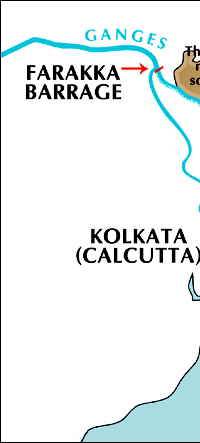
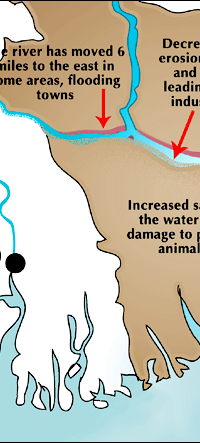



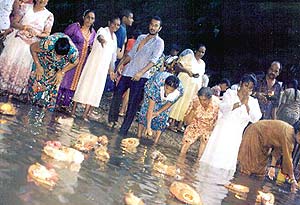
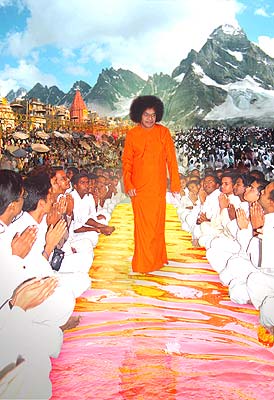








.jpg)
.jpg)
.jpg)
